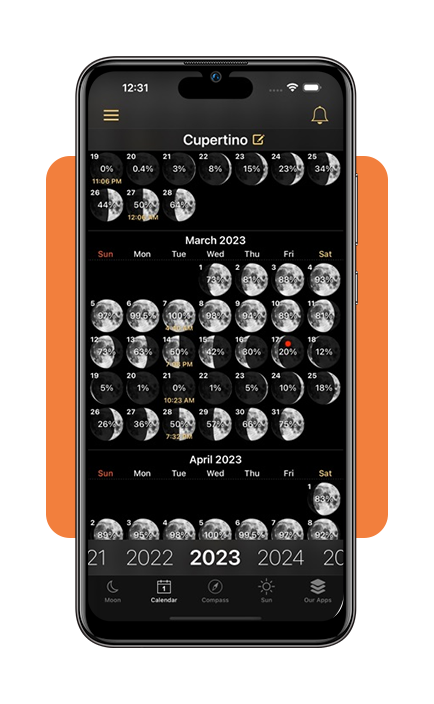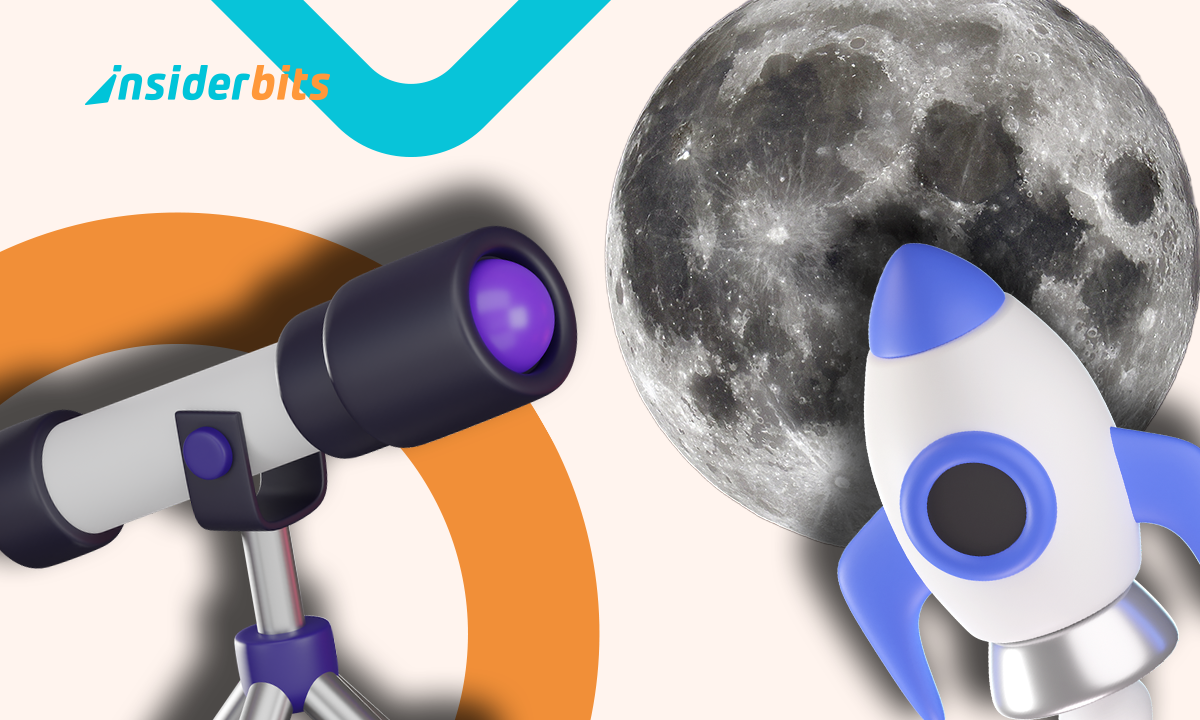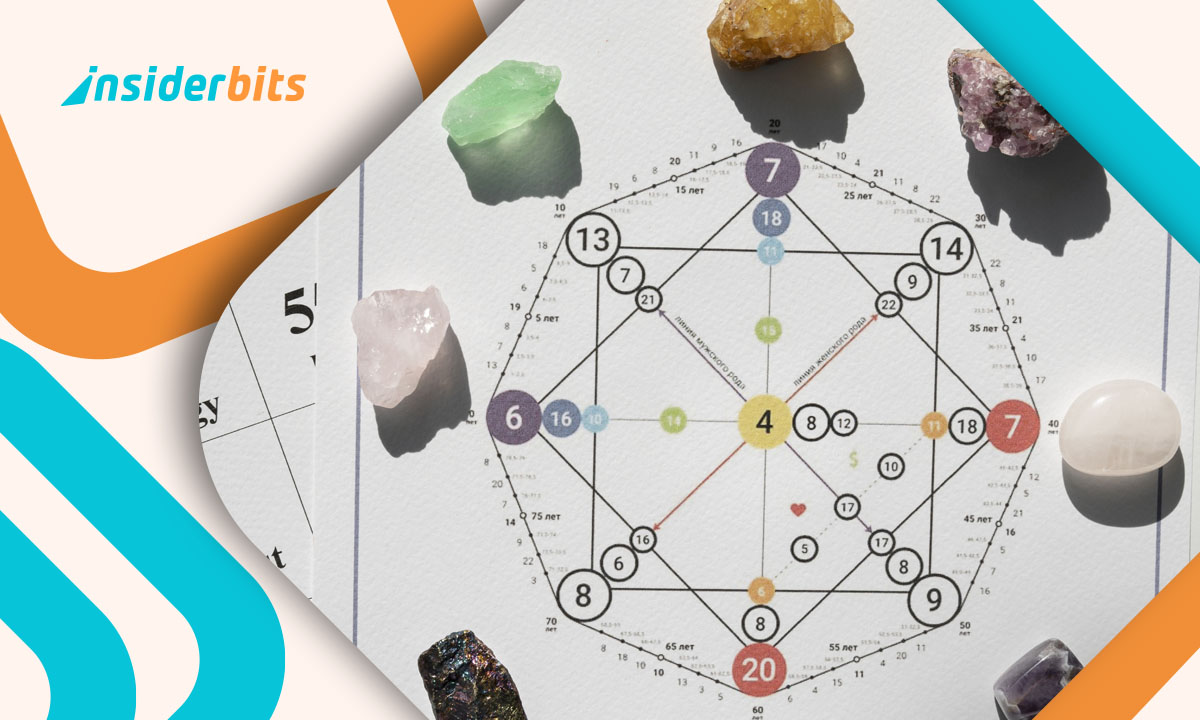The moon has been humanity’s celestial calendar for millennia, dictating everything from harvest seasons to spiritual rituals. Yet somehow, in 2025, we still forget if tonight is a full moon or just our neighbor’s motion-activated floodlight. Thankfully, your phone can now do what ancient civilizations needed stone circles for—tracking lunar phases with absurd precision.
You may be a photographer chasing the perfect moonrise shot or a gardener planting by biodynamic principles, these apps turn you into an armchair astronomer. No telescope required, just a smartphone and the willingness to ignore confused looks from friends when you say, “Wait, I need to check the moon’s azimuth first”. Let’s track moon phases!
- Moon Reader: Immergersi in un universo di piacere di lettura
- Lunar Calendar App to Find Out the Moon Phases
- Moon+ Reader Pro: Transforming Your Reading Experience
How to track moon phases with your phone
Gone are the days of squinting at the sky wondering if that’s a waxing gibbous or just light pollution. Modern apps deliver lunar Intel with military precision:
- Real-time positioning: point your phone at the sky to see the moon’s current phase superimposed via AR;
- Future forecasting: scroll forward to check if next month’s camping trip aligns with a new moon (ideal for stargazing) or a full one (ideal for werewolf cosplay);
- Geolocation adjustments: automatically calculates moonrise/moonset times for your exact coordinates—because the moon doesn’t care that you moved to Denver.
NASA’s Moon Journaling Project confirms these apps are accurate enough for educational use—though they won’t help you explain why you need to stay up until 3 AM for the lunar eclipse.
Best apps for stargazing and lunar tracking
My Moon Phase: the minimalist’s lunar bible
Available on iOS e Android, this app cuts through the noise with a clean interface that shows:
- Current illumination percentage (for when “mostly full” isn’t scientific enough);
- Countdowns to next full/new moon (so you can plan your rituals or fishing trips);
- Glossy moon visuals that make you feel like you’re orbiting it.
4.8/5
Star Walk 2: for the overachieving sky nerd
More than just moon phases, Star Walk 2 (iOS/Android) turns your phone into a planetarium:
- AR mode identifies the moon’s position even through cloud cover (or light pollution);
- Notifies you of conjunctions (when the moon cozies up to planets);
- Includes mythologies behind lunar names (Harvest Moon, Wolf Moon, etc.).
4.7/5
Moonrise, moonset, and eclipse alerts
These apps don’t just show phases—they predict celestial drama:
- Eclipse warnings: get push notifications for lunar/solar eclipses (plus viewing tips);
- Supermoon alerts: because Instagram needs that extra-large moon selfie;
- Blue moon tracking: so you can finally use “once in a blue moon” accurately.
As Astronomy Magazine notes, today’s algorithms predict lunar events years in advance—perfect for planners who need to schedule their next eclipse party now.
Sync moon phases with gardening and rituals
The moon’s influence extends far beyond pretty nightscapes—it’s a celestial scheduler that’s been dictating human activities since we first planted seeds in soil or cast nets into water.
Modern apps simply digitize what farmers, fishermen, and spiritual practitioners have known for centuries: lunar cycles matter. Here’s how to harness that ancient wisdom with today’s technology:
Gardening by the moon (no, it’s not witchcraft)
Many gardening traditions swear by planting according to moon phases, and apps like My Moon Phase make it idiot-proof:
- Waxing moon (growing light): Ideal for planting leafy greens, fruits, and flowers—the period of upward growth energy;
- Full moon: prime time for harvesting (and allegedly when herbs are most potent);
- Waning moon (diminishing light): best for root vegetables, pruning, or transplanting;
- New moon: a resting period—perfect for weeding and pest control.
Il Initium Swiss moon phase guide confirms even luxury watchmakers incorporate lunar tracking—because apparently your tomatoes and your Rolex have similar needs.

Fishing when the fish are actually biting
Forget guessing—solunar fishing apps use moon position and phase to predict:
- Major feeding periods: when game fish are most active (typically around moonrise/moonset);
- Minor feeding windows: shorter but reliable bite times;
- Tidal influences: coastal anglers get saltwater movement predictions too.
Spiritual and wellness practices
Da Reddit’s secular witches to biohackers tracking circadian rhythms:
- New moon: setting intentions (or just finally starting that gym membership);
- Full moon: releasing what no longer serves you (like unanswered texts);
- Moon water charging: apps pinpoint exact full moon timing down to your timezone;
- Sleep optimization: some use waning moons to gradually reduce screen time.
As MakeUseOf reports, even mainstream wellness apps now incorporate lunar cycles for meditation and habit-tracking.
The productivity hack no one talks about
Sync your:
- Creative work to waxing phases (when energy builds);
- Editing/refining to waning periods;
- Big launches to full moons (maximum visibility);
- Rest/recovery to new moons.
Our astronomy apps guide shows how tech-savvy professionals quietly schedule meetings and deadlines around lunar energy flows—no crystals required.
Final thoughts
These apps do more than predict celestial events; they reconnect us with natural rhythms we’ve spent centuries trying to override.
Whether you use them to grow better tomatoes, catch more fish, or simply remember to look up from your screen occasionally, apps that track moon phases offer something rare: a way to sync our hectic modern lives with the slow, sure cadence of the cosmos.
If all this seems too mystical, just remember—even NASA’s Moon to Mars planners track lunar cycles. If it’s good enough for rocket scientists, it’s good enough for your garden.





